| The pentacle is one of the most common symbols in paganism and one of the most misunderstood. To many unfamiliar with pagan beliefs, it has very negative connotations and is seen as a symbol of devil worship and evil. In pagan practice however, it is seen as protective and positive. Let's have a look at the types of pentacles you may have seen. |
| The Inverted Pentacle Yes, this symbol has been appropriated by some who style themselves as “devil worshippers”. Remember though, pagans don't believe in the devil as a rule. So devil worship would actually be considered an inverted form of Christianity, since that is the religion in which the devil originates. In pagan belief, the inverted pentacle would represent the horned god, a 2nd degree initiate of Wicca, or simply just an upside down pentacle. |
| Sigil of Baphomet This form of the pentacle is the primary symbol of the official Church of Satan, which is a self proclaimed group of atheists. They do not believe in or worship Satan as an actual being or deity, rather they have adopted Satan as a symbol of pride, liberty and individualism. They themselves state that they have no connection to pagan beliefs of any kind. |
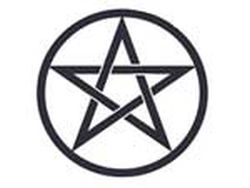
The Upright Pentacle
This is the most common form of the pentacle among pagans. As I said, it is a protective, positive power representative of the search for divine knowledge. A pentacle is used to invoke or banish energies, depending on how it is drawn and as a focal point for magickal works. Though it's often drawn with many decorative additions, or combined with other symbols, the pentacle itself remains the same. A five pointed star encased in a circle.
The pentacle has many different meanings and interpretations, the most common of which is the elemental pentacle. Four points represent the four worldly elements, earth, water, fire and air, while the fifth point represents the spirit or the divine. Different traditions assign the four elements to different points, but the top point is almost always reserved for the spirit. The circle surrounding the five point star indicates continuity and the unending flow of life and energy.
Two types of pentacle can be drawn in ritual, the invoking pentacle and the banishing pentacle. Invoking pentacles are drawn to summon energies at the beginning of a ritual or magickal working. A banishing pentacle is drawn to safely disperse energies that have gathered. There's no set rule on where to start drawing and which direction to go, but many traditions draw clockwise to invoke, and counterclockwise to banish. The most common practice to all is that the drawing be done in one continuous motion.
Before I show you how I draw my pentacles, I wish to share one piece of advice. I believe that magick is a very personal thing. I believe that any ritual or spell has to have meaning to the performer in order for it to be effective. So, though I may share with you the way I do certain things, I urge you to listen to your own instincts and do things the way it feels right to you. Don't just parrot what everyone else does. Then it's just done by rote, with no true meaning behind it.
That being said, I use the elemental pentacle, with the points designated as shown below.
This is the most common form of the pentacle among pagans. As I said, it is a protective, positive power representative of the search for divine knowledge. A pentacle is used to invoke or banish energies, depending on how it is drawn and as a focal point for magickal works. Though it's often drawn with many decorative additions, or combined with other symbols, the pentacle itself remains the same. A five pointed star encased in a circle.
The pentacle has many different meanings and interpretations, the most common of which is the elemental pentacle. Four points represent the four worldly elements, earth, water, fire and air, while the fifth point represents the spirit or the divine. Different traditions assign the four elements to different points, but the top point is almost always reserved for the spirit. The circle surrounding the five point star indicates continuity and the unending flow of life and energy.
Two types of pentacle can be drawn in ritual, the invoking pentacle and the banishing pentacle. Invoking pentacles are drawn to summon energies at the beginning of a ritual or magickal working. A banishing pentacle is drawn to safely disperse energies that have gathered. There's no set rule on where to start drawing and which direction to go, but many traditions draw clockwise to invoke, and counterclockwise to banish. The most common practice to all is that the drawing be done in one continuous motion.
Before I show you how I draw my pentacles, I wish to share one piece of advice. I believe that magick is a very personal thing. I believe that any ritual or spell has to have meaning to the performer in order for it to be effective. So, though I may share with you the way I do certain things, I urge you to listen to your own instincts and do things the way it feels right to you. Don't just parrot what everyone else does. Then it's just done by rote, with no true meaning behind it.
That being said, I use the elemental pentacle, with the points designated as shown below.
| With the points arranged this way, an invoking pentacle would be drawn from the most ethereal element, Spirit, to the most solid, Earth. And a banishing pentacle would be drawn in reverse, from the most solid to the most ethereal. It's the way that just seemed right to me, and as I said, you have to learn to trust your instincts. |
As always, feel free to add your comments or questions! Next week, we'll have a look at some other common pagan symbols, and their meanings. Goddess bless!
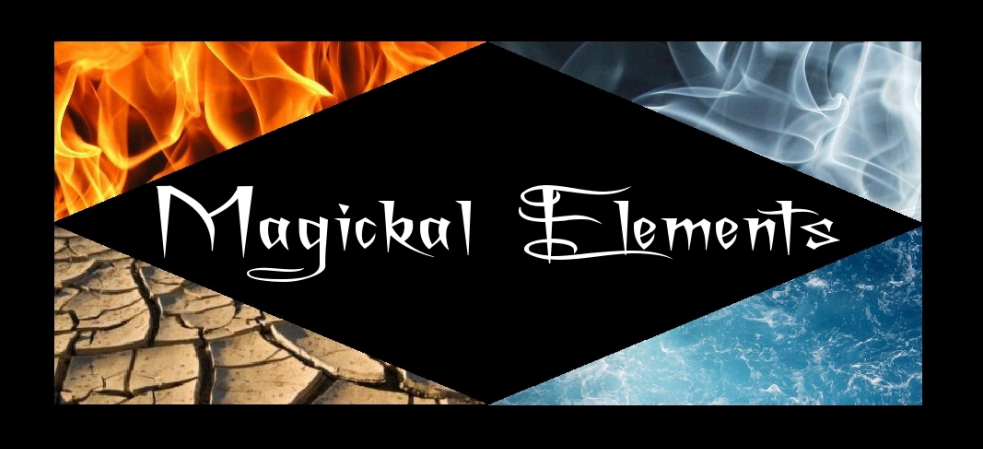
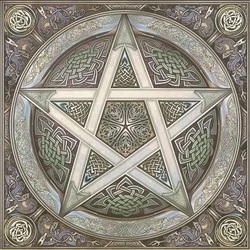
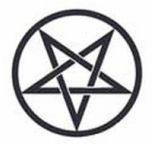
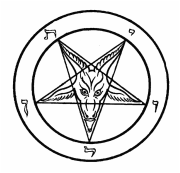
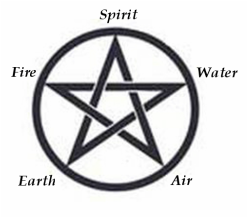

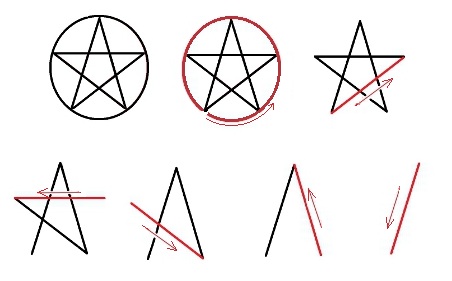
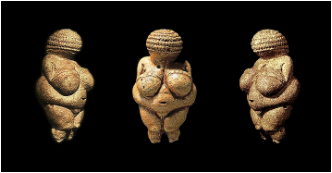
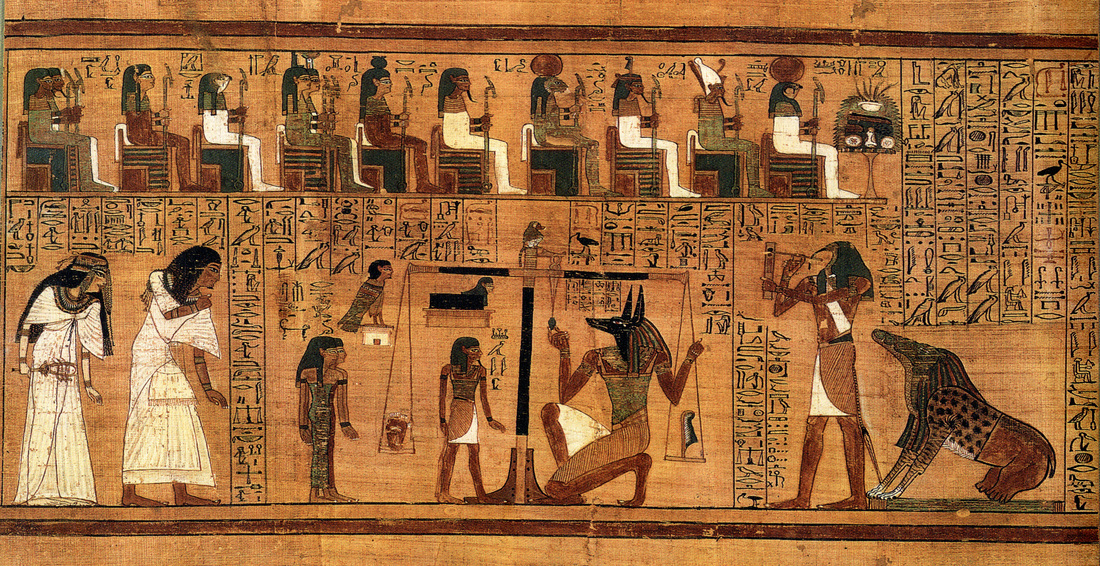
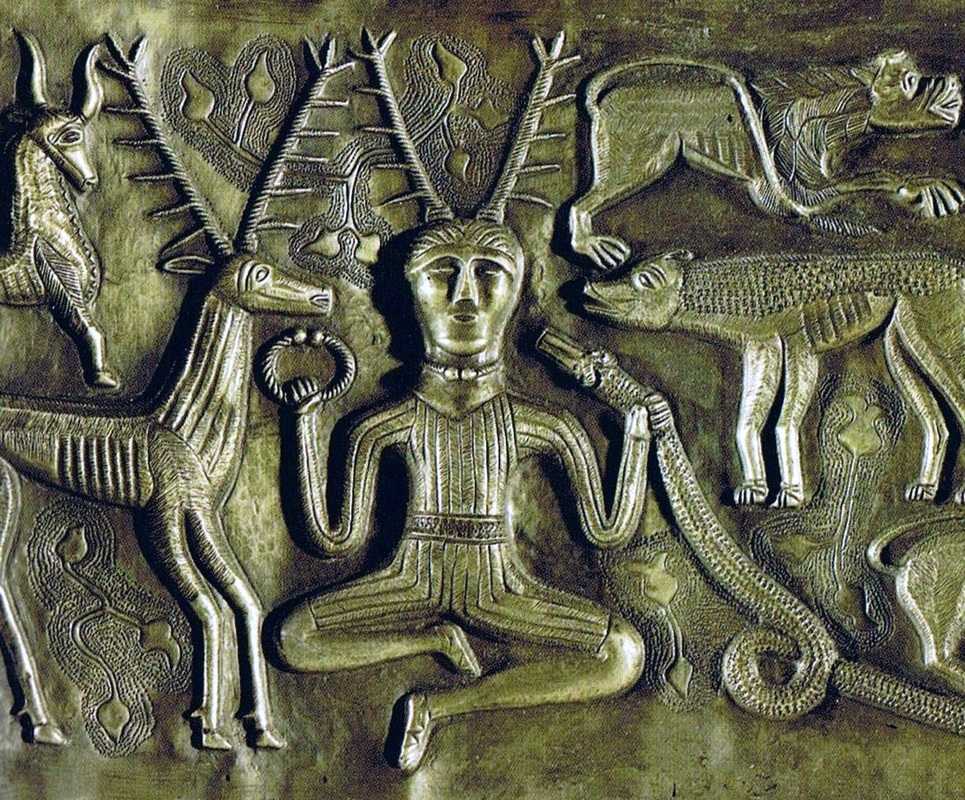
 RSS Feed
RSS Feed
